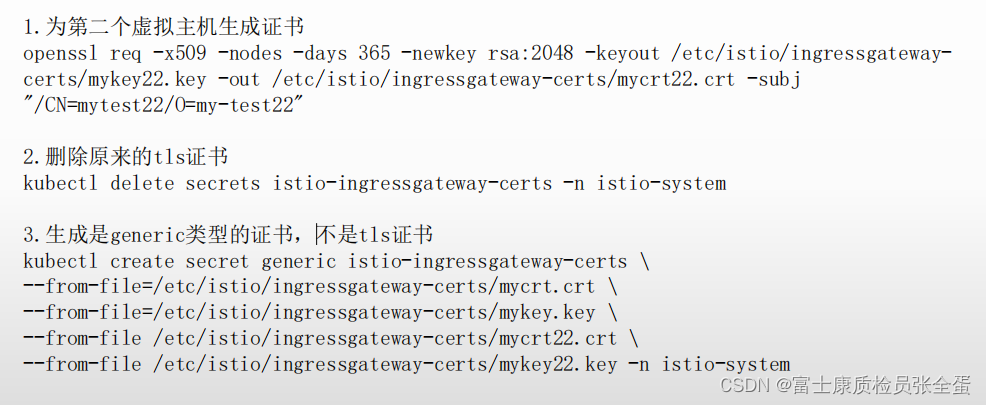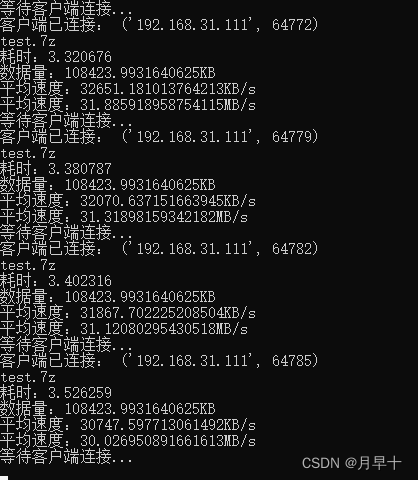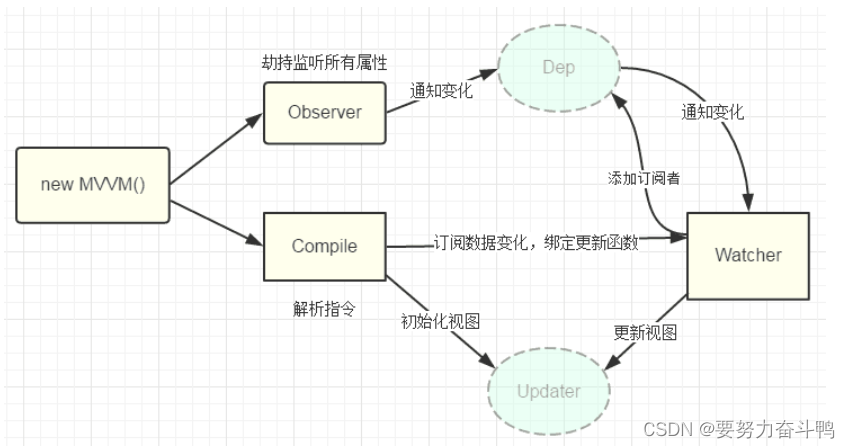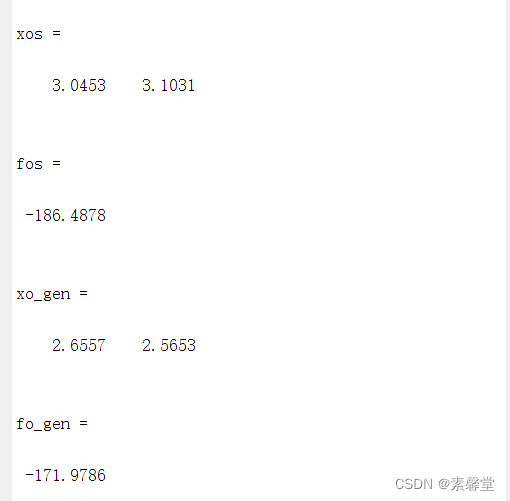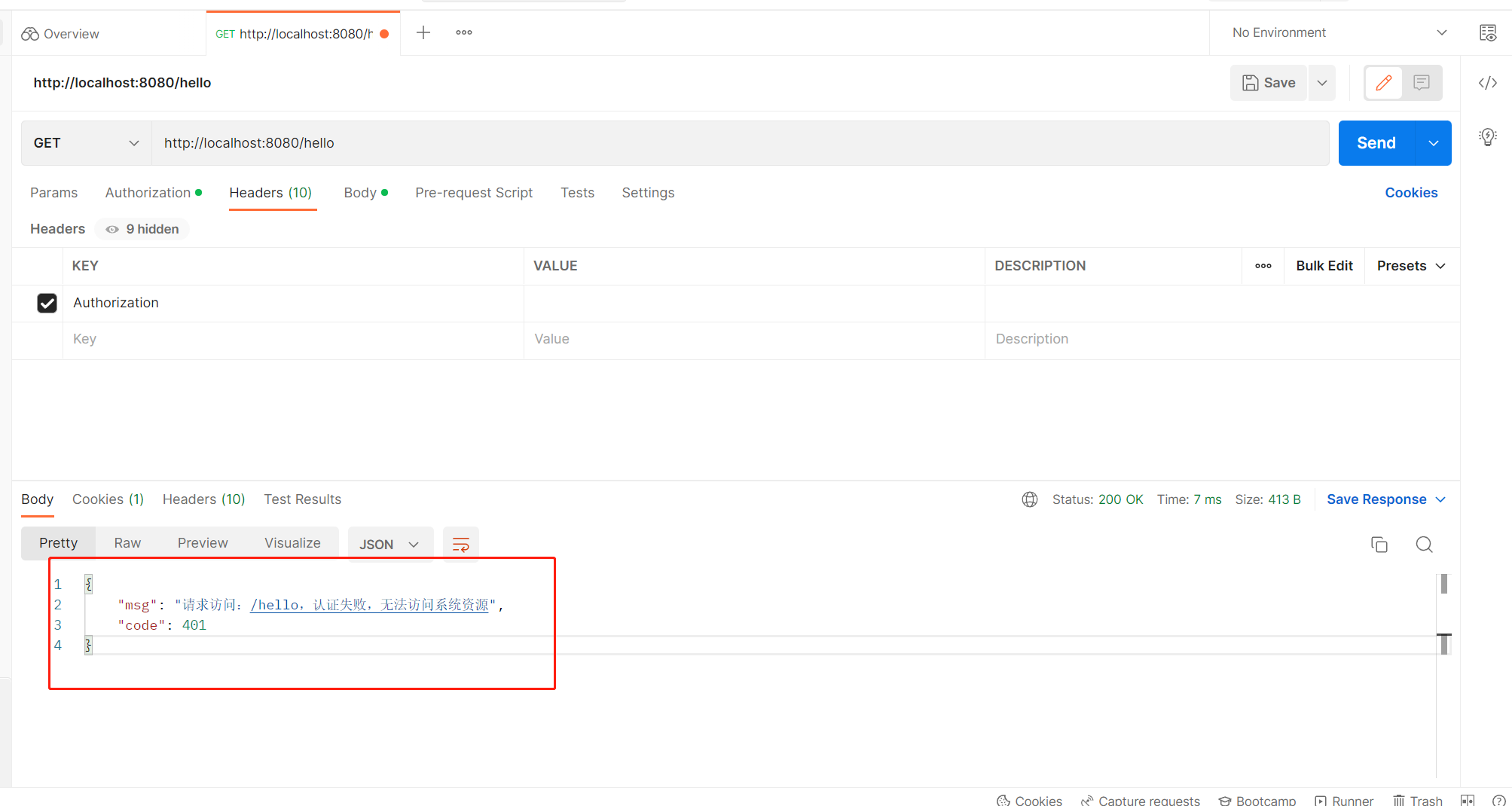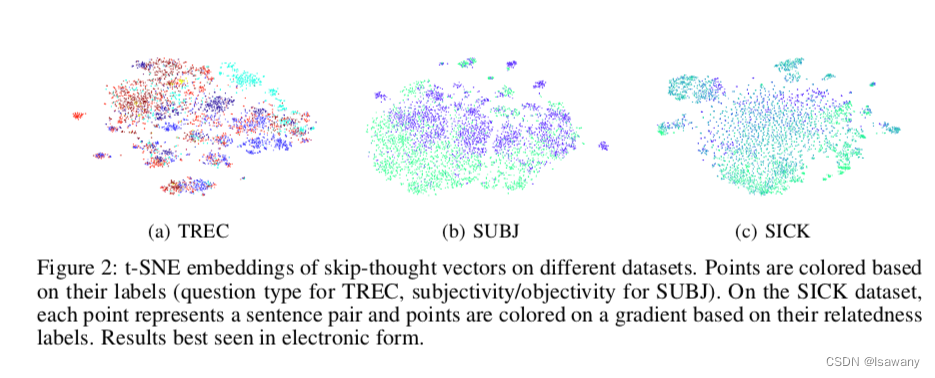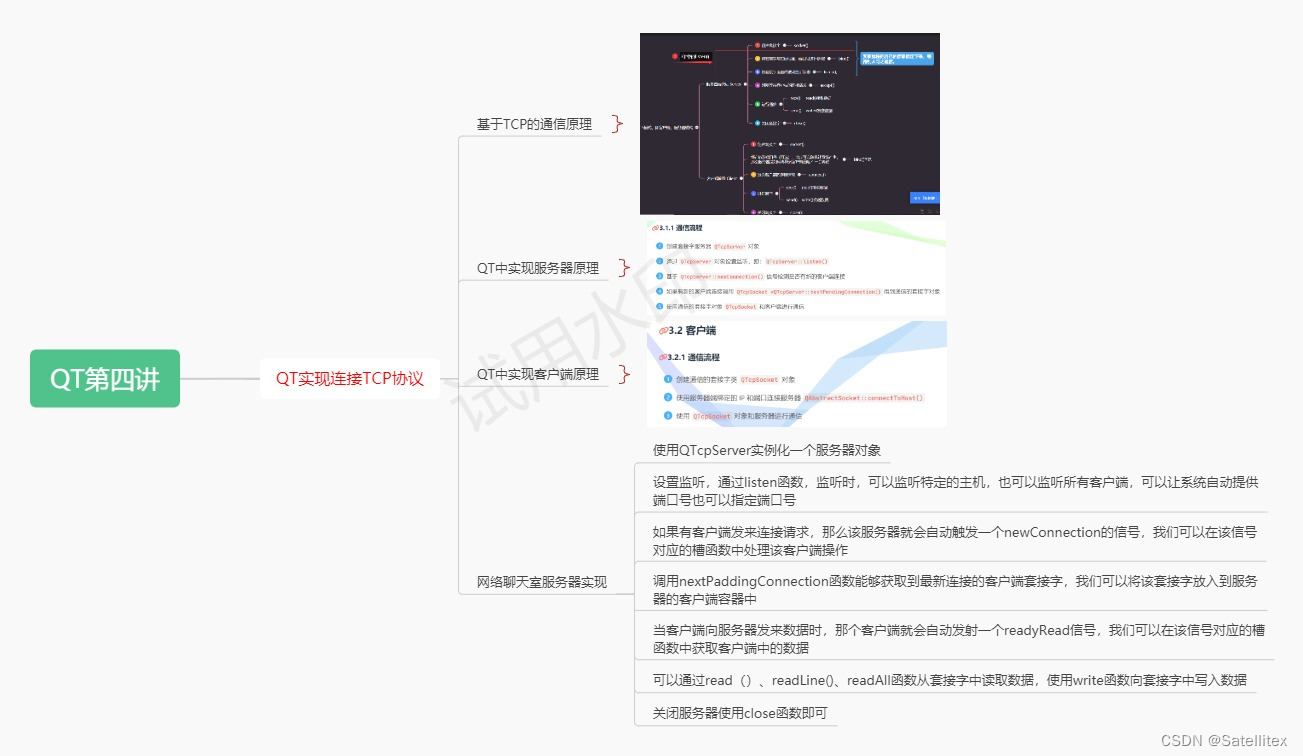文章目录
- 题目描述
- 法一 自顶向下归并排序
- 法二)自底向上归并排序
题目描述
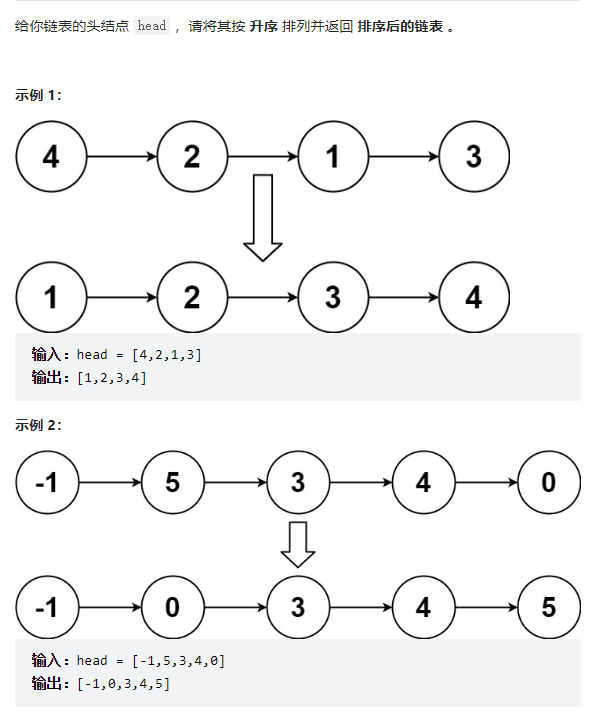
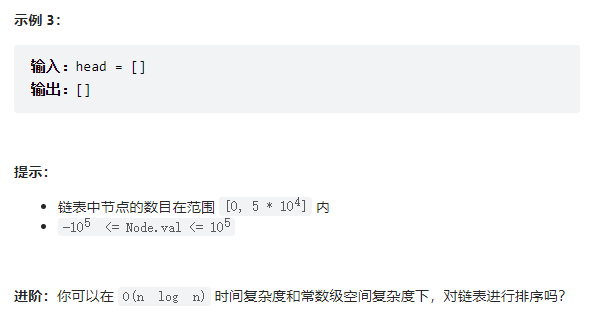
题目的进阶问题要求达到 O(nlogn) 的时间复杂度和 O(1) 的空间复杂度,时间复杂度是 O(nlogn) 的排序算法包括归并排序、堆排序和快速排序(快速排序的最差时间复杂度是 O(n2),其中最适合链表的排序算法是归并排序
法一 自顶向下归并排序
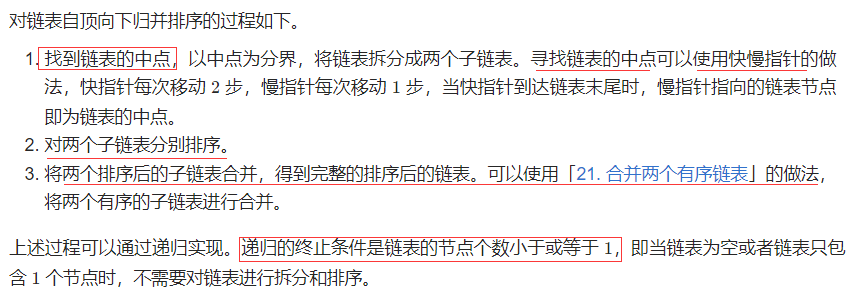
class Solution {
public:
ListNode* sortList(ListNode* head){
return sortList(head, nullptr);
}
ListNode* sortList(ListNode* head, ListNode* tail){
if(head==nullptr){
return head;
}
if(head->next==tail){
head->next=nullptr;
return head;
}
ListNode *fast=head, *slow = head;
while(fast!=tail){
slow = slow->next;
fast = fast->next;
if(fast!=tail){
fast = fast->next;
}
}
ListNode* mid = slow;
return merge(sortList(head, mid), sortList(mid, tail));
}
ListNode* merge(ListNode *l1, ListNode *l2){
ListNode *dummy = new ListNode(-1);
ListNode *cur=dummy, *s1=l1, *s2=l2;
while(s1 && s2){
if(s1->val < s2->val){
cur->next = s1;
s1 = s1->next;
} else {
cur->next = s2;
s2 = s2->next;
}
cur = cur->next;
}
cur->next = s1 ? s1 : s2;
return dummy->next;
}
};

法二)自底向上归并排序
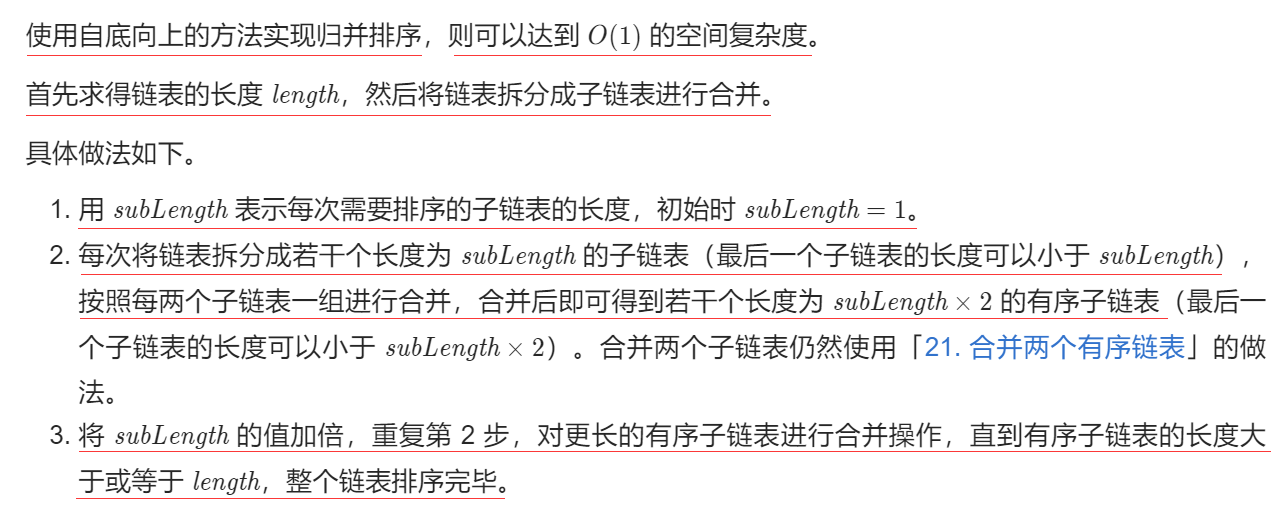

class Solution {
public:
ListNode* sortList(ListNode* head) {
if (head == nullptr) {
return head;
}
int length = 0;
ListNode* node = head;
while (node != nullptr) {
length++;
node = node->next;
}
ListNode* dummyHead = new ListNode(0, head);
for (int subLength = 1; subLength < length; subLength <<= 1) {
ListNode* prev = dummyHead, *curr = dummyHead->next;
while (curr != nullptr) {
ListNode* head1 = curr;
for (int i = 1; i < subLength && curr->next != nullptr; i++) {
curr = curr->next;
}
ListNode* head2 = curr->next;
curr->next = nullptr;
curr = head2;
for (int i = 1; i < subLength && curr != nullptr && curr->next != nullptr; i++) {
curr = curr->next;
}
ListNode* next = nullptr;
if (curr != nullptr) {
next = curr->next;
curr->next = nullptr;
}
ListNode* merged = merge(head1, head2);
prev->next = merged;
while (prev->next != nullptr) {
prev = prev->next;
}
curr = next;
}
}
return dummyHead->next;
}
ListNode* merge(ListNode* head1, ListNode* head2) {
ListNode* dummyHead = new ListNode(0);
ListNode* temp = dummyHead, *temp1 = head1, *temp2 = head2;
while (temp1 != nullptr && temp2 != nullptr) {
if (temp1->val <= temp2->val) {
temp->next = temp1;
temp1 = temp1->next;
} else {
temp->next = temp2;
temp2 = temp2->next;
}
temp = temp->next;
}
if (temp1 != nullptr) {
temp->next = temp1;
} else if (temp2 != nullptr) {
temp->next = temp2;
}
return dummyHead->next;
}
};







